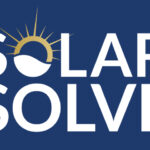Fatigue is very important and must be managed accordingly in order to minimise risks of incidents and accidents at sea. Seafarers are required to work shifts and must do so at various times of the day and night. If seafarers do not get enough rest then they can become susceptible to fatigue.
The UK’s Marine Accident Investigations Branch (MAIB) produces a bi-annual “Safety Digest” which documents cases of accidents and incidents that it has investigated. In the first edition of 2019 case 14 and case 20 both mention fatigue as playing a factor in the incidents they describe.
Often, one of the most overlooked details when designing and building a ship, is taking preventative measures to help the navigation bridge crew deal with the sun. For many years wipers have been installed on ships with clear view screens to provide navigation safety in rainy or stormy weather but often the crew have little or no help with glare and reflection from the sun.
Given that vessels operate on fixed courses they can often find themselves sailing towards the sun. Unlike a car where visors can provide some relief, the crew have to just deal with the situation they find themselves in. Heat and glare can become unbearable causing eyestrain and fatigue which increases the risk of human error occurring. This is made worse by the fact that crews also work shifts so may not have a consistent sleeping pattern.
SOLASOLV® anti-glare, heat rejecting roller screens for navigation bridge windows reject up to 93% of glare and 87% of heat from the sun whilst providing a 100% clear outward view when in use. This clear outward visibility during bright and sunny periods helps to avoid collisions and accidents occurring.
They also eliminate eyestrain and prevent fatigue creating a cooler, safer and more comfortable working environment for the crew on the bridge of the ship. SOLASOLV® roller screens are an ideal choice for dealing with the problem of the sun for ships and their crew whilst at sea.

